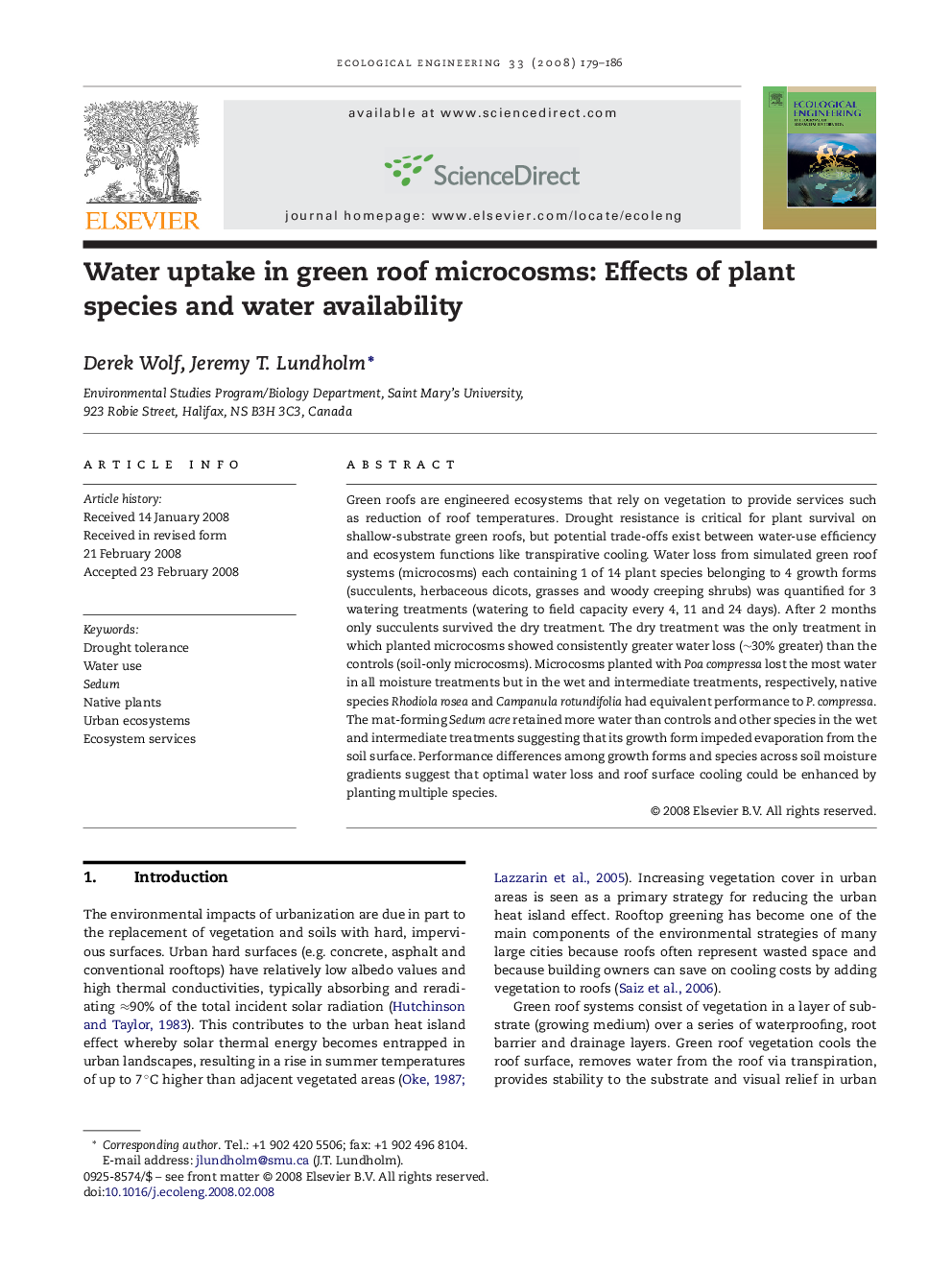| کد مقاله | کد نشریه | سال انتشار | مقاله انگلیسی | نسخه تمام متن |
|---|---|---|---|---|
| 4390784 | 1305192 | 2008 | 8 صفحه PDF | دانلود رایگان |

Green roofs are engineered ecosystems that rely on vegetation to provide services such as reduction of roof temperatures. Drought resistance is critical for plant survival on shallow-substrate green roofs, but potential trade-offs exist between water-use efficiency and ecosystem functions like transpirative cooling. Water loss from simulated green roof systems (microcosms) each containing 1 of 14 plant species belonging to 4 growth forms (succulents, herbaceous dicots, grasses and woody creeping shrubs) was quantified for 3 watering treatments (watering to field capacity every 4, 11 and 24 days). After 2 months only succulents survived the dry treatment. The dry treatment was the only treatment in which planted microcosms showed consistently greater water loss (∼30% greater) than the controls (soil-only microcosms). Microcosms planted with Poa compressa lost the most water in all moisture treatments but in the wet and intermediate treatments, respectively, native species Rhodiola rosea and Campanula rotundifolia had equivalent performance to P. compressa. The mat-forming Sedum acre retained more water than controls and other species in the wet and intermediate treatments suggesting that its growth form impeded evaporation from the soil surface. Performance differences among growth forms and species across soil moisture gradients suggest that optimal water loss and roof surface cooling could be enhanced by planting multiple species.
Journal: Ecological Engineering - Volume 33, Issue 2, 3 June 2008, Pages 179–186